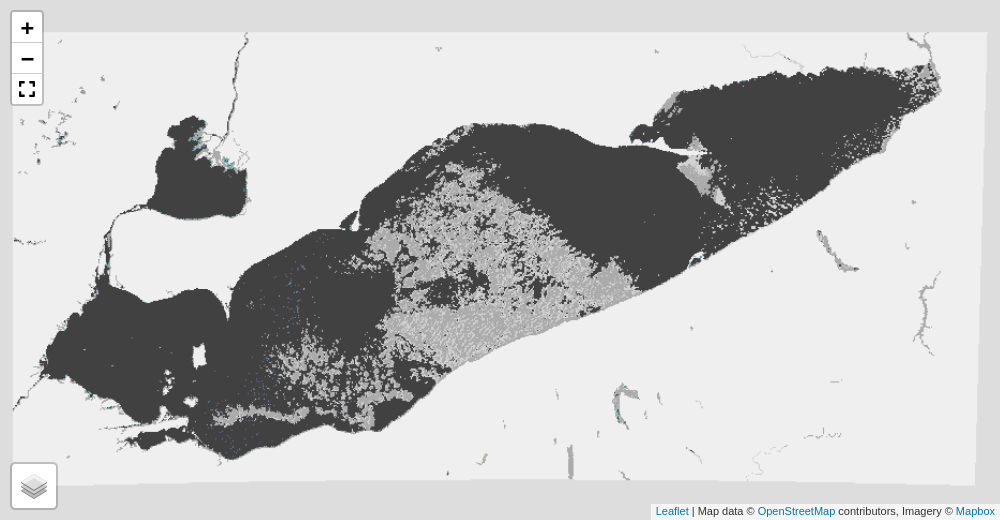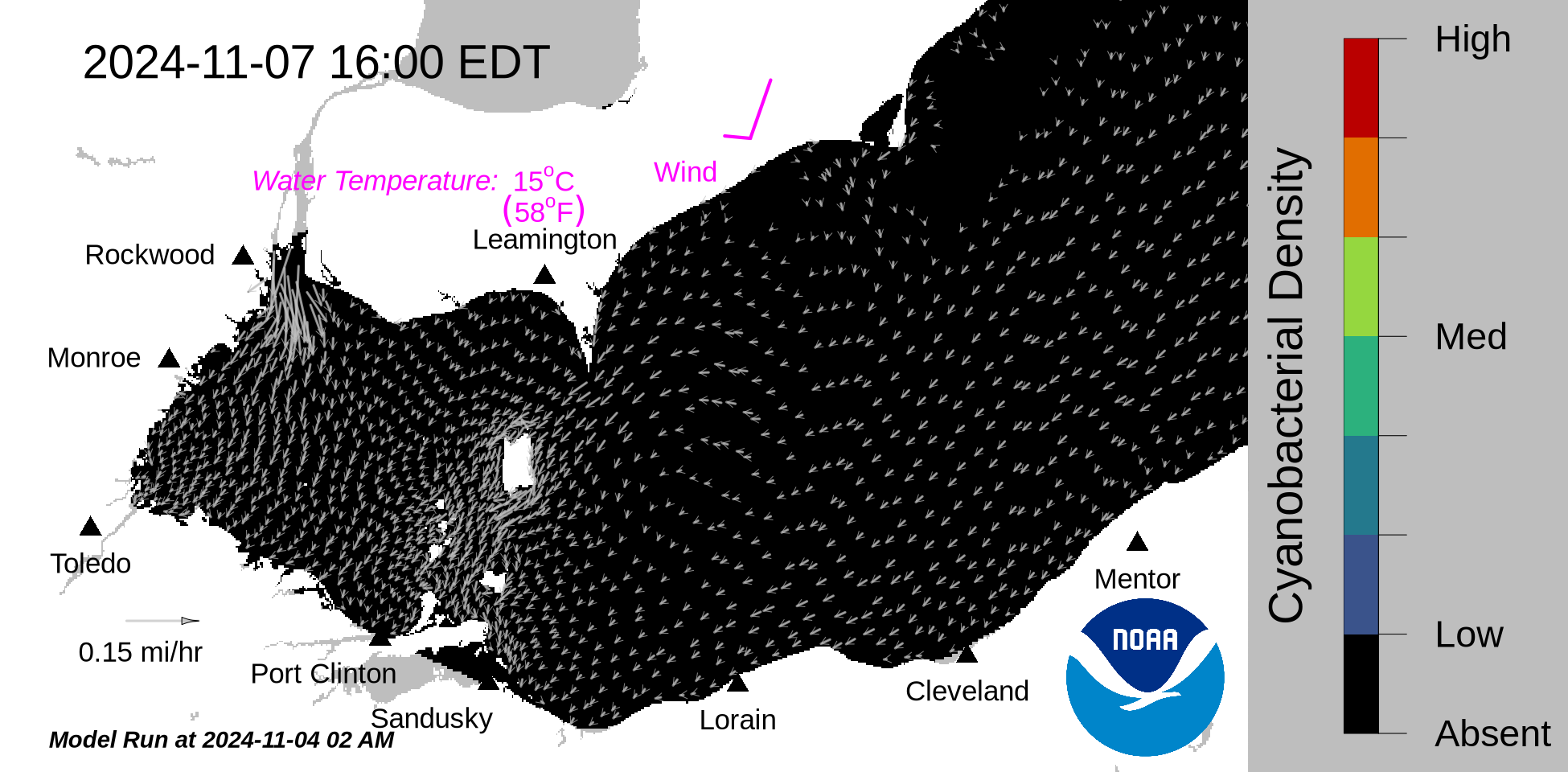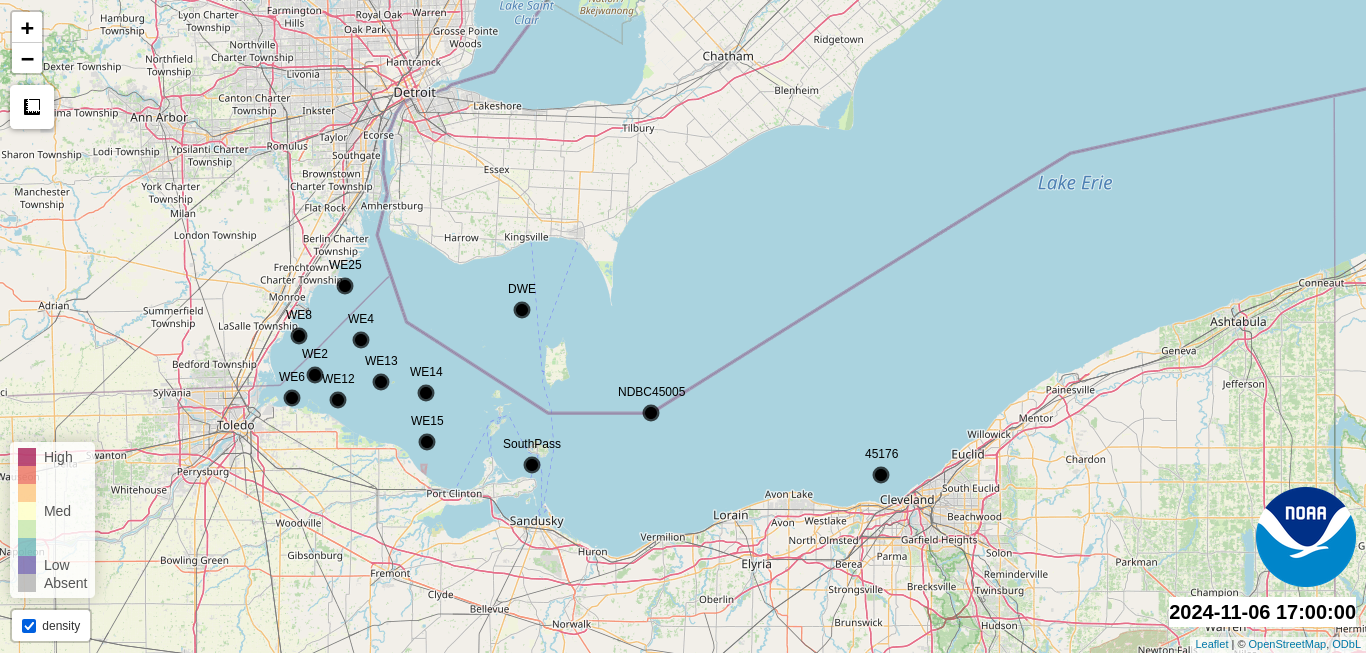Lake Erie Harmful Algal Bloom Forecast
NOAA provides forecasts for seasonal blooms of cyanobacteria (blue-green algae) in Lake Erie, typically from July to October when warmer water creates favorable bloom conditions. Western Lake Erie has been plagued by an increase of HABs intensity over the past decade. These blooms consist of cyanobacteria or blue-green algae, which are capable of producing toxins that pose a risk to human and animal health, foul coastlines, and impact communities and businesses that depend on the lake. A combination of satellite image (for bloom location and extent), a forecasting and mixing model provide information on the current status of the bloom, forecasted position both at the surface and at depth, and toxicity from field samples. See individual products and our FAQs for more information. For our Lake Erie Hypoxia forecast click here.
Forecast Products
The cyanobacteria bloom in western Lake Erie has an approximate area of 10 square miles, which is unchanged from Jul 08. Satellite imagery shows patches of cyanobacteria in North Maumee Bay near Erie, MI in far western Lake Erie. Sandusky Bay has a local bloom of mixed cyanobacteria. No toxins have been detected in western Lake Erie. Toxins are present in Sandusky Bay. Areas of scum and dense accumulations are a risk if swimming and for pets--Stumpf 07/11/2025
The past few days of imagery can be seen at the HAB monitoring site. The Lake Erie Forecast is operated by the National Centers for Coastal Ocean Science. Contact hab@noaa.gov for technical Questions. Last Updated: 2025-07-11 09 PM EST

Observed Bloom Position
(from most recent satellite image)

Forecasted Bloom Position
(from modeling)

Vertical Mixing Forecast
HAB Alerts
HABs in Lake Erie pose a risk to human and animal health, foul coastlines, and negatively impact communities and businesses. Sign up to receive Lake Erie HAB updates via email.
2025 Western Lake Erie Projections
The early season projection estimates bloom severity based on Maumee River discharge and modeled phosphorus loads. It is issued weekly from May until the seasonal forecast is announced.
2025 Lake Erie Seasonal Forecast Event
The official seasonal forecast for Lake Erie was announced on June 26, 2025 during a live webinar hosted in collaboration with Ohio Sea Grant. A recording of the event can be found here.
Western Lake Erie Bloom Severity Index (SI)
Following the 2024 Microcystis bloom, we reprocessed the satellite remote sensing time series used to monitor the severity and impacts of annually occurring cyanobacteria (Microcystis) HABs. The satellite reprocessing included new calibrations and improved algorithms, generating a more consistent data set for HAB monitoring in Lake Erie. You can find more information about the updated time series here. In addition, Ohio Sea Grant hosted a webinar on the time series update (recorded presentation here).
The new time series was used to re-evaluate the historical cyanobacteria bloom severity index (SI) for Lake Erie. The SI is based on the quantity (biomass) of the bloom over a sustained 30 day period and is scaled to the minimum observed bloom biomass (2005) and maximum observed bloom biomass (2011) to date. More information about the SI can be found in Stumpf et al. 2016.
Please find the updated Lake Erie SI time series here. When using this data, please use the following attribution:
The Lake Erie Severity Index (SI) is derived from NOAA’s National Centers for Coastal Ocean Science HAB Monitoring Program.
Additional Resources
- Archived Lake Erie Forecasts
- More information about our bloom monitoring imagery
- FAQs – Frequently Asked Questions about cyanobacteria and the forecasts NOAA issues
- Contributors and Data Providers
- Lake Erie HAB Forecast Guide – User guide to help navigate the forecast products
For other data on Lake Erie HABs, visit one of these websites:
- NOAA GLERL – HAB Program
- NOAA GLERL – Great Lakes Coastal Forecasting System
- NOAA National Weather Service, Cleveland
- Ohio EPA
- Ohio State University
- Heidelberg University, National Center for Water Quality Research
For safety information on these blooms, visit the Ohio EPA website.
